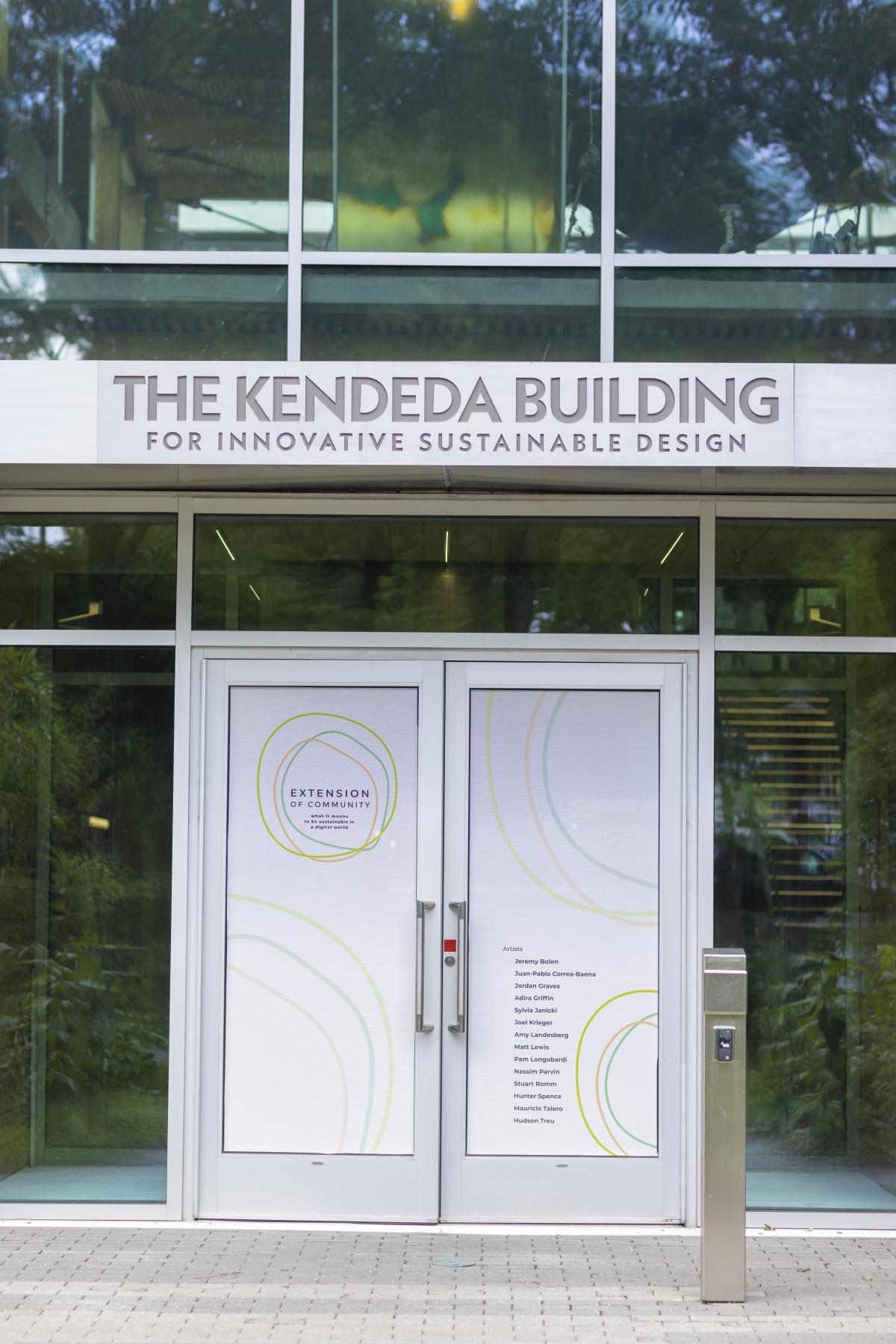
Extension of Community: what it means to be sustainable in a digital world
Curated by Birney Robert
This exhibit is open from August 21 - November 12, 2023 at Georgia Tech in Atlanta, GA.
When nature and technology collide, they create a space where lines are blurred between our natural environment and artificial ecosystems. And often, technology evolves to the detriment of our planet: GMO farming might keep costs low for consumers, but it throws off the delicate ecological balance of pollinators; accessible air travel keeps us connected while its mass carbon emissions change climate patterns.
As humans who are tasked with taking care of the Earth, how can we ensure responsible sustainability and good stewardship, while allowing innovation to occur? How do we develop a symbiotic relationship with technology, while also taking care of the planet?
In this exhibit, Extension of Community: what it means to be sustainable in a digital world, we examine what it means to exist in today’s technology-enabled world, while ensuring our planet can thrive.
Georgia Tech has partnered with Atlanta artists to showcase issues related to our natural environment in order to build community and action around the climate crisis. This interactive exhibit features solar panels, interactive digital media, geolocation, AI image generation tools, plastics, plants, biosensors, and geospatial data visualization. This exhibit asks viewers to consider:
- How have our technological and digital developments helped and harmed us?
- How can we be more digitally sustainable?
- What are the limits of technology and how can we shift our behaviors to help heal the planet?
All 14 artists and scientists reflect on community and sustainability within their practice and question the impacts of technology on the environment and society. This exhibit addresses themes of plastics and waste, social and environmental justice, and imagined futures.
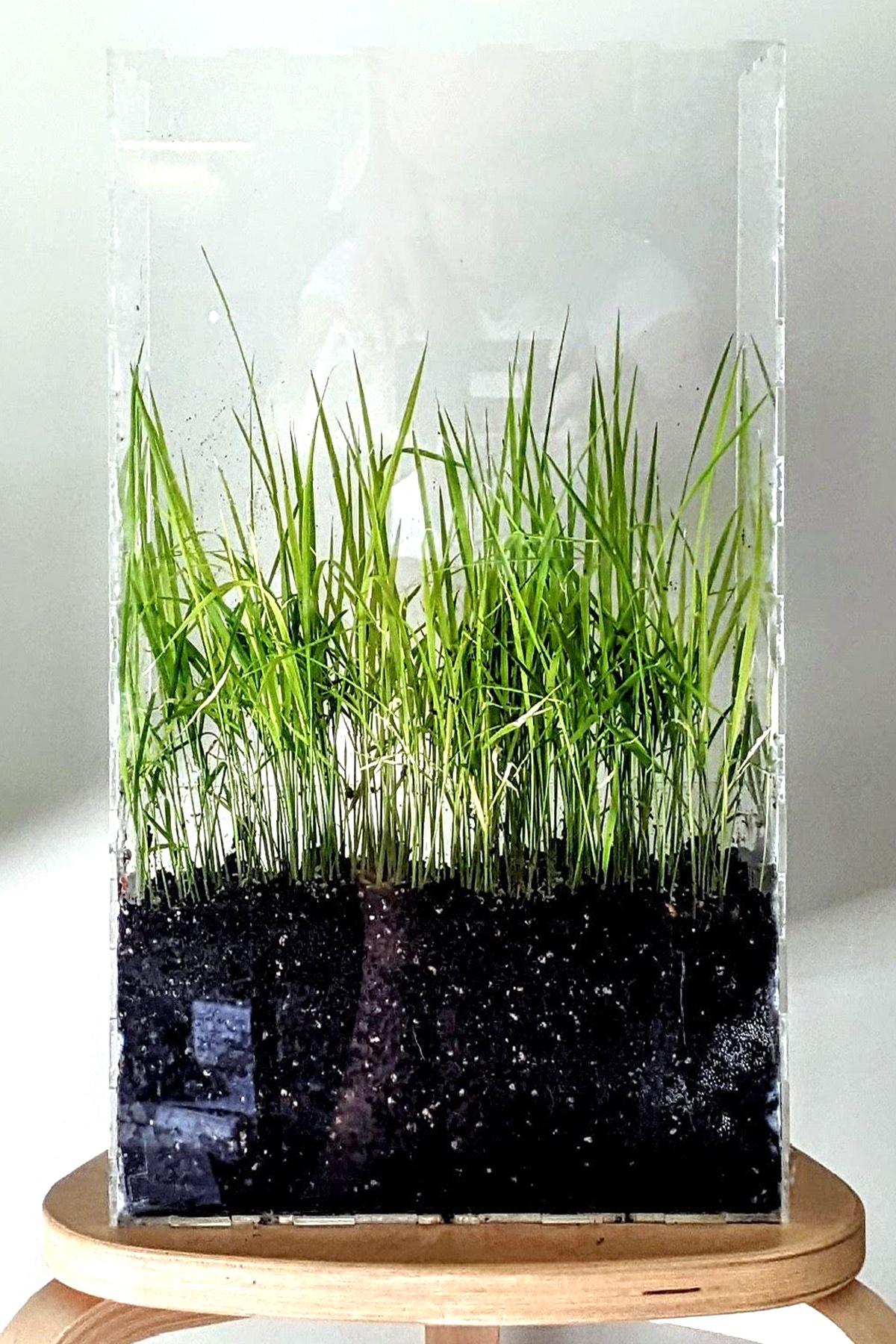
Drifters Project
The Anthropocene is the era in which humans have caused significant changes in the Earth’s climate and ecosystems. Pam Longobardi is interested in the “collision between nature and global consumer culture”, particularly plastics. Longobardi excavates, documents, and reuses found “vagrant” plastics in her art to tell a story of our late-capitalism consumer culture, and how that affects the oceans. Longobardi uses the ocean as a type of cultural space that is social and commodified.
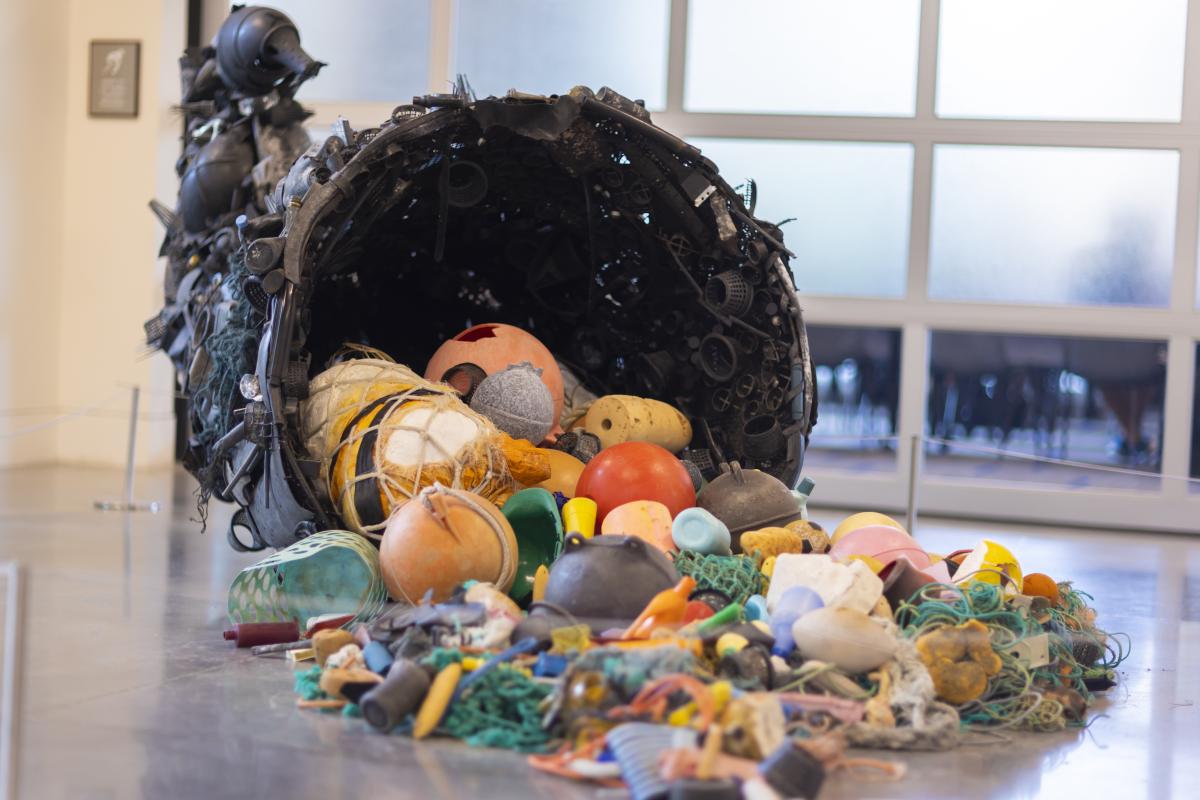
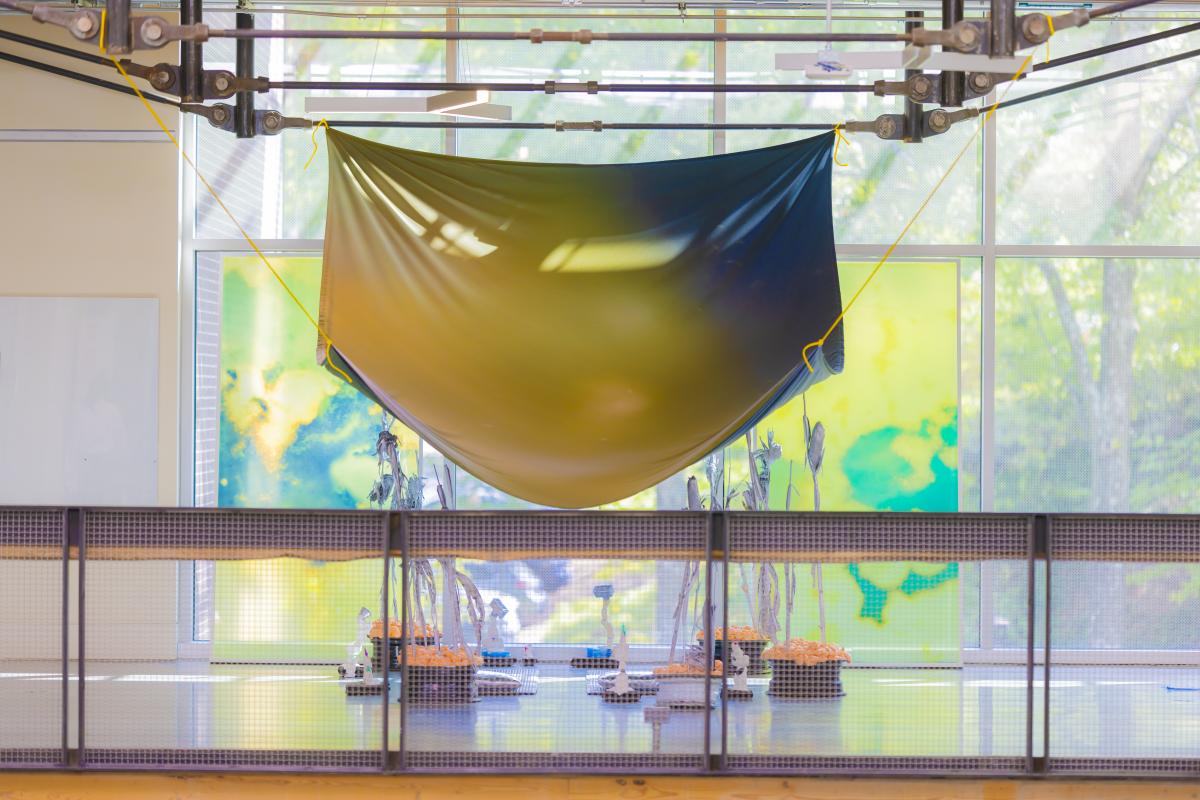
Sulfur Skies
Jeremy Bolen brings our attention to the sky and the separation and connection we have to nature through technology. Bolen’s work questions geo-engineered futures and the “impacts and consequences of altering Earth in an attempt to sustain habitability.” Bolen has partnered with Dr. Juan-Pablo Correa-Baena and his research on solar-powered technology to create a speculative future in his installation, Sulfur Skies.
Sensing Bodies
Sylvia Janicki and Nassim Parvin’s Sensing Bodies, “is an art installation that integrates plants, biosensors, and LED data displays to examine our socio-political entanglements with plants.” Sensing Bodies is a three-part installation showcasing Georgia plantation plants (Indigo, Tobacco, and Rice). What if plants and humans could communicate through technology so we can have a deeper understanding of the land, colonization, the past, present and future?

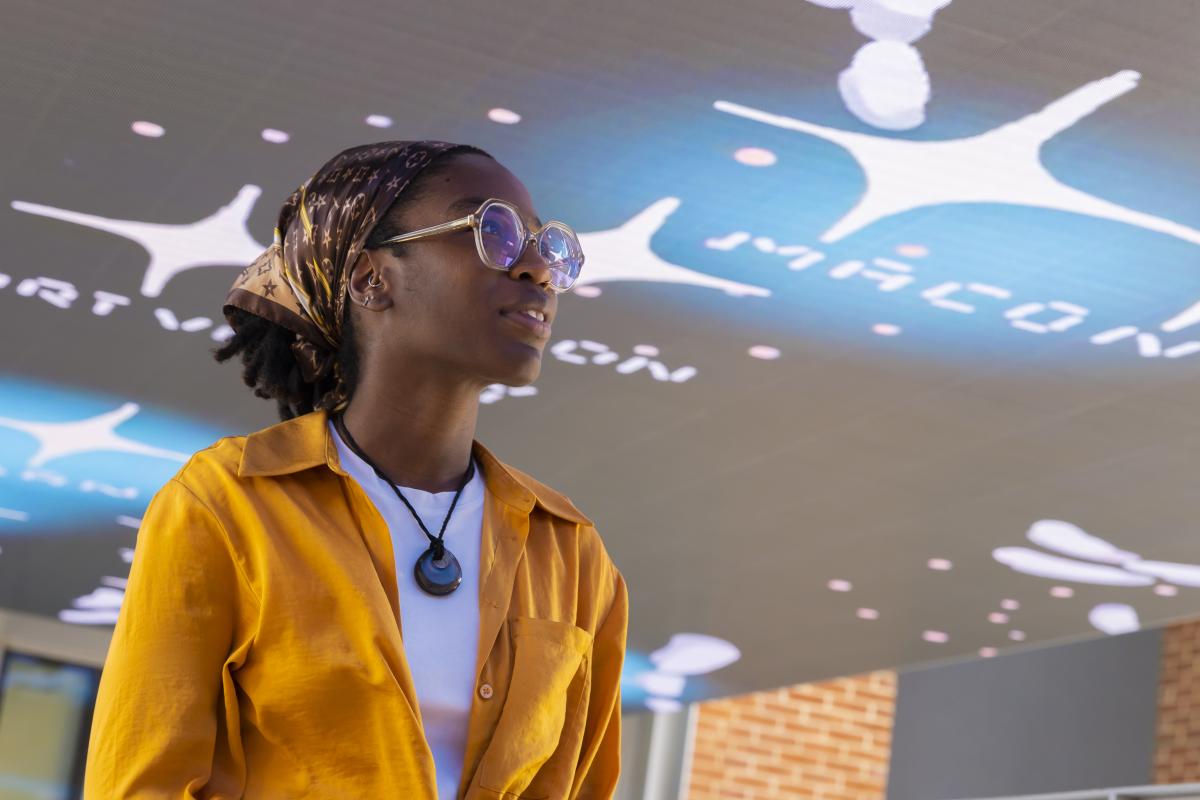
The Peach Pit
Adira Griffin’s The Peach Pit “is a geospatial data visualization that displays the disproportionate amount of pollution affecting Black and Brown communities in the state of Georgia.” Griffin researches the Environment Protection Agency’s (EPA) data to see the locations of Georgia’s Superfund sites, which are highly polluted areas. Griffin visualizes the Superfund site data through fluid and thought-provoking digital designs to symbolize how data is not always static and concise, but fluid and fuzzy.
Diodic Communeco
In Inspired Action Design’s (IAD) “Diodic Communeco”, collaborators Hunter Spence, Matt Lewis, Joel Krieger, and Mauricio Talero, imagine a future where we bridge together three concepts, to pause, breathe, and communicate, to help better understand the planet, technology, and each other. The Georgia Tech Media Bridge becomes an agora where we can “share a cadence of dialogue, thought, and meditation” about complex issues around technology and the environment.
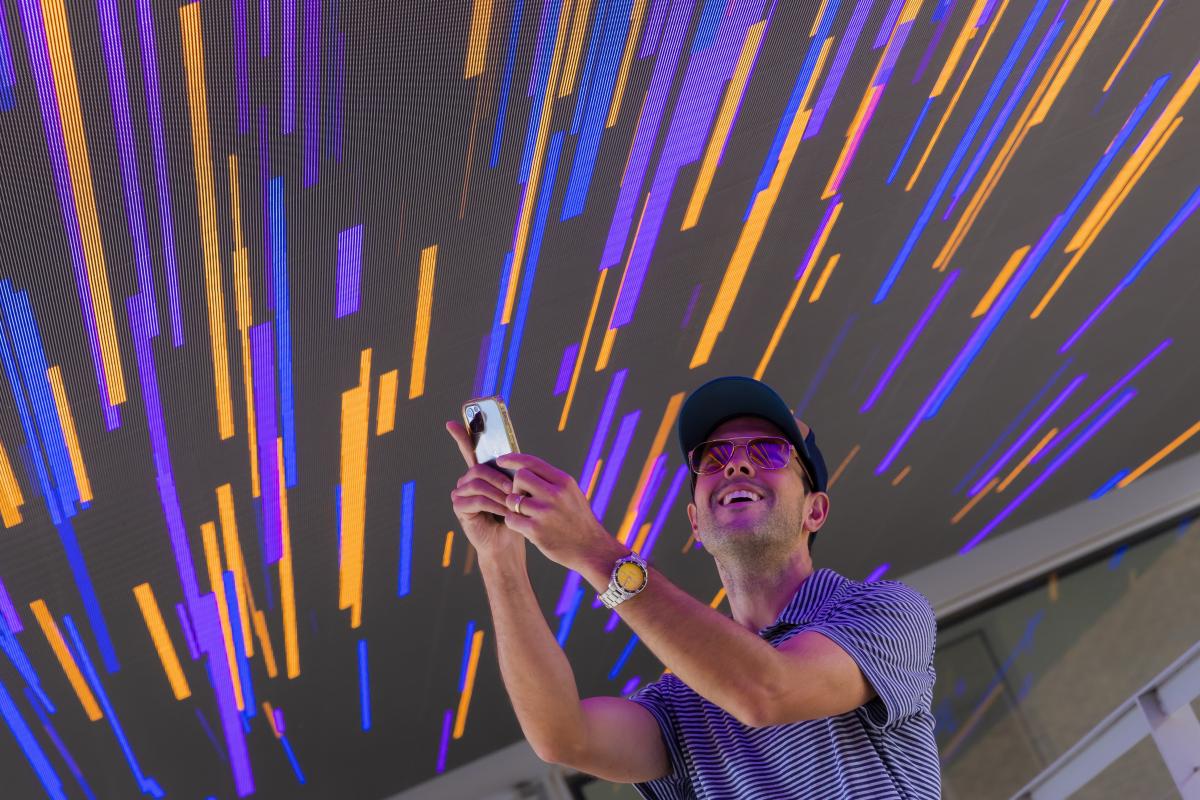
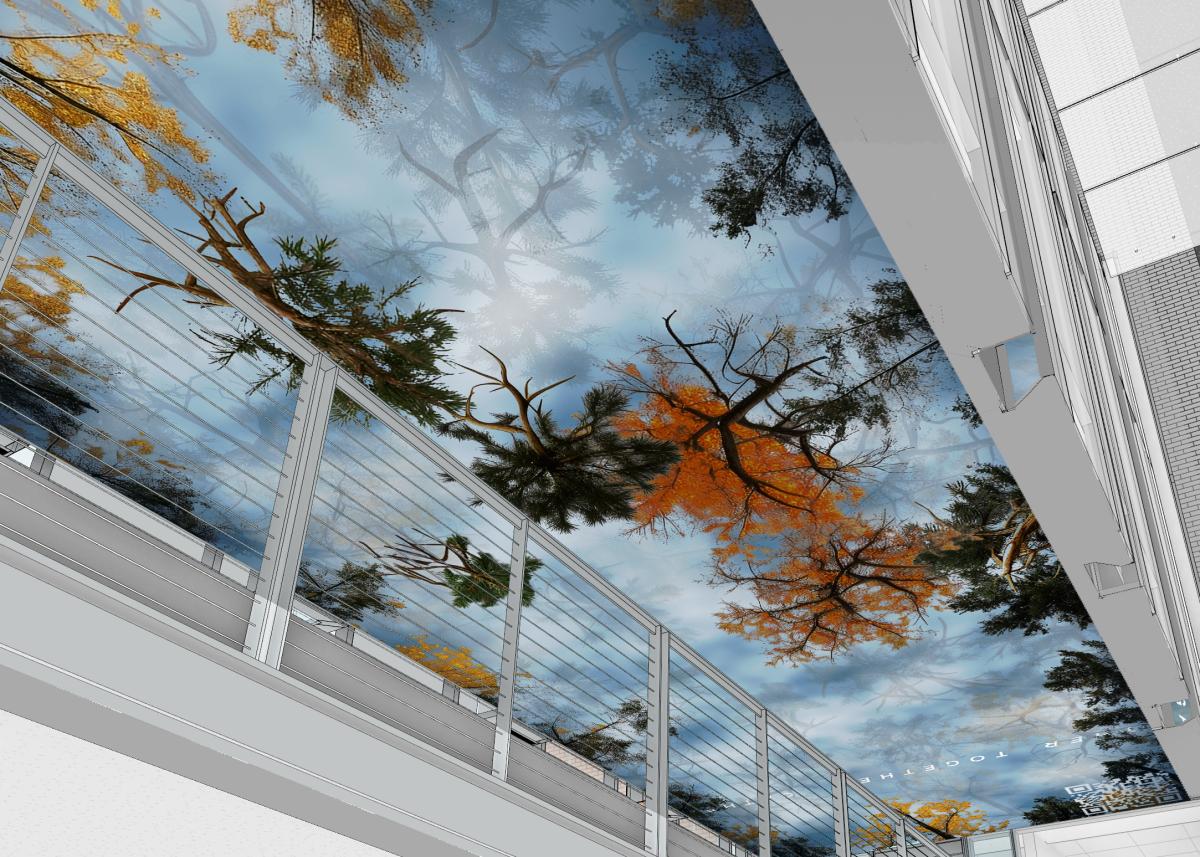
Gather the Forest
Gather the Forest, created by Stuart Romm, Amy Landesberg, Hudson Treu, and Jordan Graves, invites visitors to gather physically at the Media Bridge to grow a virtual and digital forest in the heart of Georgia Tech’s campus. Gather the Forest inspires us to ponder our interconnectedness with nature and humans, “a tree is never alone. Like all living things, it belongs to a community of organisms that depend on each other.”
An array of artists and researchers based in Atlanta make up this exhibit: Jeremy Bolen, Juan-Pablo Correa-Baena, Jordan Graves, Adira Griffin, Inspired Action Design (Collaborators: Joel Krieger, Matt Lewis, Hunter Spence and Mauricio Talero) Sylvia Janicki, Amy Landesberg, Pam Longobardi, Nassim Parvin, Stuart Romm, and Hudson Treu.
Come participate in this exhibit to question and converse about community and sustainability.
Artist Talk
Extension of Community: what it means to be sustainable in a digital world explores the intersection of science, technology and art, asking questions such as; How have our technological and digital developments helped and harmed us? How can we be more digitally sustainable? And how can technology be harnessed to help heal the planet? All the artists reflect on community and sustainability within their practice and question the impacts of technologies on the environment.
Locations
The Library, Kendeda Building for Innovative Sustainable Design, and Media Bridge serve as foundational spaces for future scholarship. The Price Gilbert Library was recently renovated as “a site that exemplifies new modes of information exchange”, says architect and professor, Stuart Romm. The Kendeda Building or Innovative Sustainable Design is an initiative for Georgia Tech to face the Living Building Challenge (LBC), “the world’s most ambitious and holistic green building achievement”, says building director Shan Arora. The Media Bridge’s mission is to “serve as a catalyst of connected scholarship that spans departments, schools, and colleges across campus to spur new thoughts and innovation through connected thinking”, says Hunter Spence, a lecturer and one of the design architects for the Media Bridge. These three buildings are the canvas and backdrop for Extension of Community: what it means to be sustainable in a digital world.
